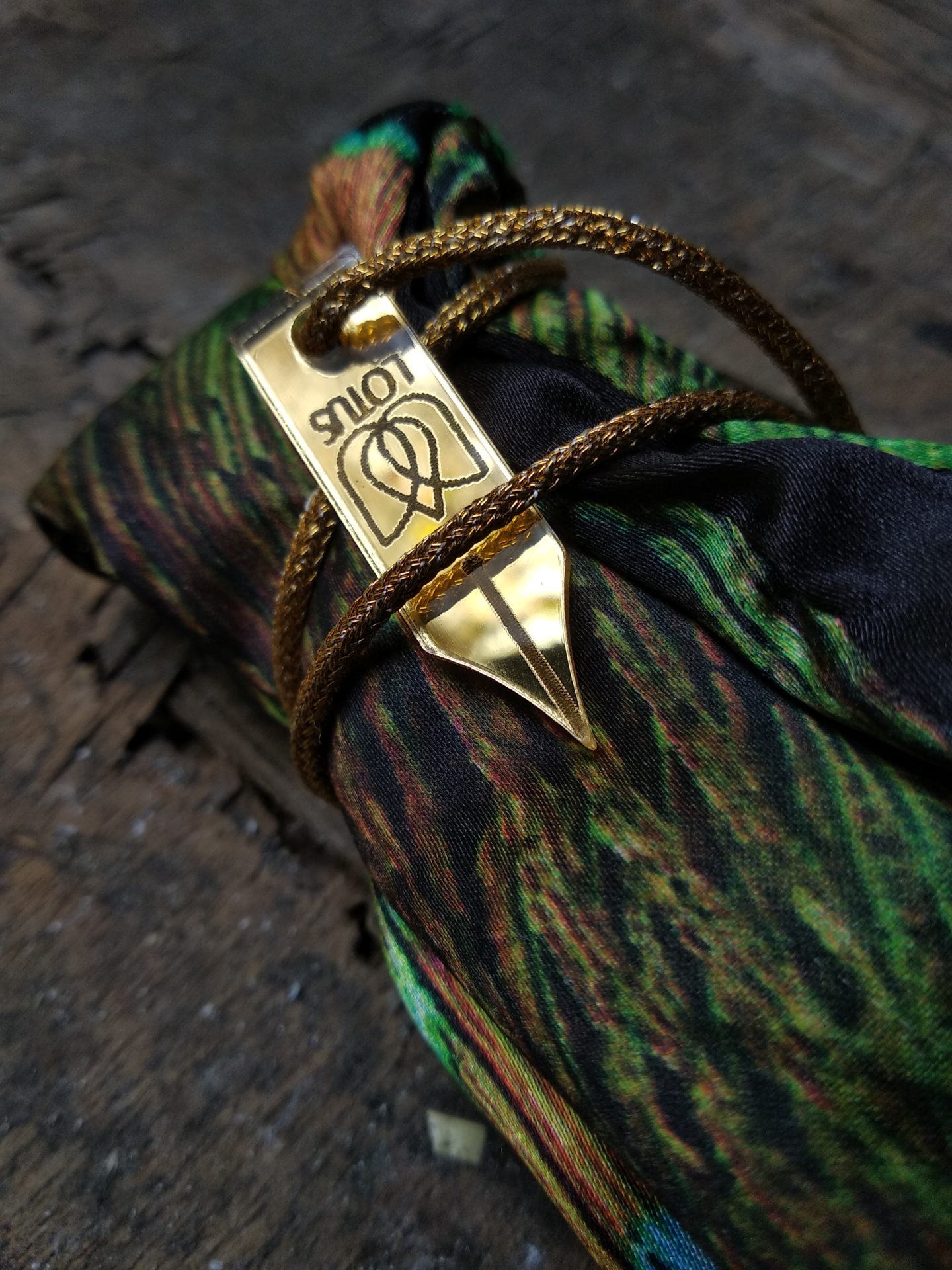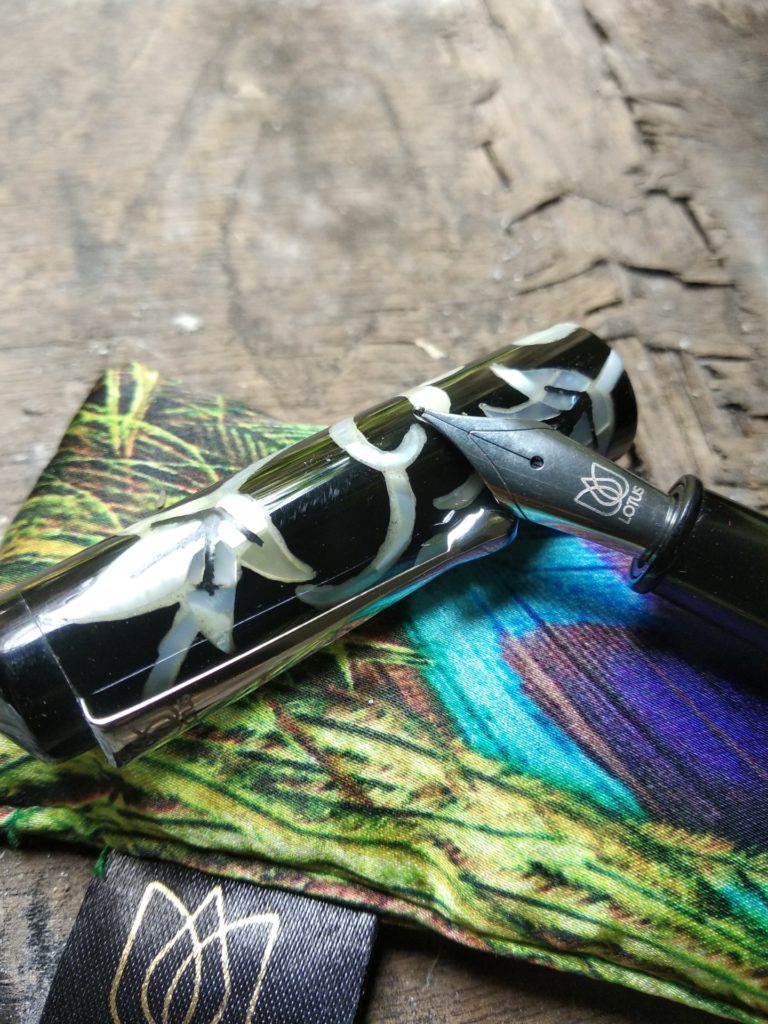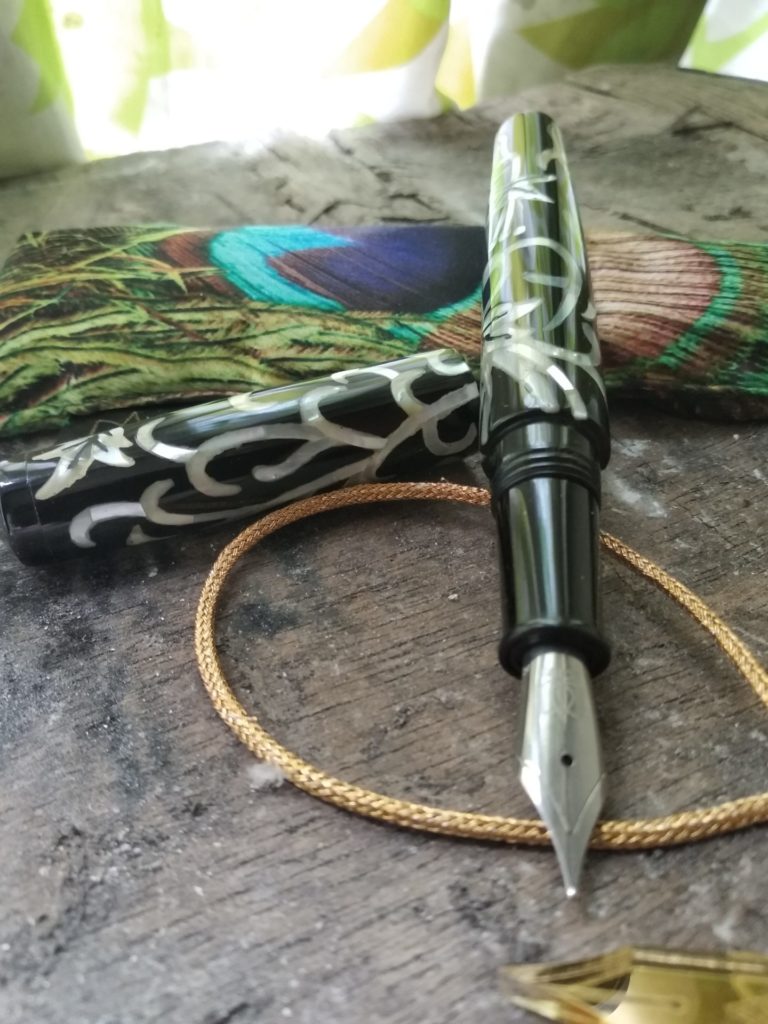
Arun Singhi of Lotus Pens is an institution. Literally a giant, among the mortal penmakers of India and I say this without in anyway belittling the others, and confident, that they will wholeheartedly (okay, reluctantly, if you may), vouch for what I say. And there are reasons that compel me to say so. For, more than anything else, to Arun Singhi goes the credit of creating the segment, almost single handed, where the Lotus blooms in all its regal splendour. Yes, many are seeking to entrench themselves in this upmarket niche: where the pens are eye-candies; are crafted mostly out of imported materials; sporting branded nib-feeds; ornaments and filling systems; but the true credit of identifying the segment and then establishing it, goes solely to Arun Singhi. The commercial success that has been the crowning glory of the Lotus brand only refurbishes the point that I am trying to make.
For those who have joined us late, it will not be an exaggeration to say that this segment did not exist even remotely comparable to its current form even 5 years back when Lotus started turning its first pens commercially. Indian fountain pens were synonymous with eyedropper filler ebonite pieces, remnants from an era when fountain pens were a necessity as opposed to being an accessory. It was in this wasteland that Lotus introduced, albeit gradually, the cartridge-converter filling systems, the imported resins and the standardised nibs of German origin. No, contrary to popular belief, the market had not developed like an embankment breaching flood overnight – it had taken small steps towards fruition and full credit must be given to Arun Singhi for keeping the faith alive, for roughing it out in those early days, weathering the lukewarm response of the pen lovers, the storms of apathy as it were. And storms there were, physical ones even, that had wreaked havoc.

Twice did the floods devastate the Lotus manufacturing facilities, destroying expensive imported raw materials and painstakingly crafted finished products alike. And then of course there was the miasma of the pandemic and the forced lockdown that has robbed us all of vital years from our life. I am saying all this for a simple reason – Arun Singhi is not a young man who is striking out into unchartered waters, fueled by the power of youth. He is all of 69, and Lotus is literally a flower of passion of a retired man who is seeking his final encore. It may sound a bit harsh, but the fact remains, the spirit called Arun Singhi may be willing, but the flesh is weak and that alone increases my respect for the man many times over. Salute!
Now for the Lotus pens. That they are extremely robust in built and are virtually failproof incorporating the quality imported components that they are fitted with, goes without saying. Another wise thing that Arun Singhi has done with his pens is that he seldom deviates far from the few standard basic structures that he has honed into for his pens. As he is seldom adventurous, beyond a certain point, the risk of things getting out of control is also minimised, which ensures that almost all Lotus pens hover around a standard mean in terms of quality and performance. This, needless to say, is a very welcome feature from the point of view of the fountain pen fanatics.
But adventurous Arun Singhi certainly is in terms of the aesthetics, the design, the look and feel. As a matter of fact, the sheer number of designs that Lotus has on offer is mindboggling to put things mildly and the one complaint that all of us, pen lovers, have against Lotus is for tempting us with so many pens that we are at a total loss to decide which ones to buy and end up ruing the one that was left behind! The Lotus adventurism again, is not restricted to the artistic elements alone, for Lotus has experimented, quite successfully at that, with different materials like mother of pearl, carbon fiber, buffalo horn, casein and sandalwood among others, not to mention eclectic combinations.

Take the current piece for example. The pen, a basic Lotus model (Shikhar to be precise), fashioned out of ebonite has been hand carved, the design so created being inlaid, again manually with mother of pearl inserts to create a masterpiece that reminds one of the artistry evident in the Taj Mahal. The visual appeal of the fountain pen can be summed up simply as: breath-taking. And pardon me as I am unable to resist the temptation – so are the many other Lotus pens that I proudly possess.
Arun Singhi, displaying the true characteristics of a Zen master is extremely reticent, unwilling to divulge the details either about his struggles, or his successes, so I guess, I will take the opportunity to fill up some relevant details. This particular pen has taken 4 master workmen approximate 80 hours to complete, the craftsmanship alone justifying what some consider to be the “steep” pricing. And that is, if one does not consider the intellectual effort that has gone into the conceiving of the pen and the top- class inputs that have been sourced from around the world to creation.
However, if there is one chink in the Lotus armour, the Achilles’ Heel as it were, then it would be the lack of narratives surrounding the masterpieces. Don’t forget, even the Taj Mahal needs a Mumtaz Mahal – Shah Jahan love story to give it the transcendental aura that it is blessed with.
For More information: https://www.lotuspens.com/
Watch the video here:

Arun Singhi and his Lotus creations. always mesmerizing